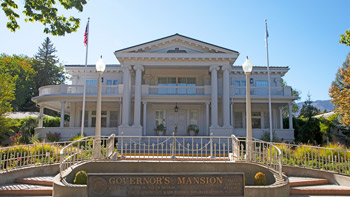Carson City was established in 1858 and was named after the mountain man Kit Carson. Carson has served as Nevada’s capital since statehood in 1864. Until 1969, Carson City was the county seat of Ormsby County; however, during this year the county was dissolved and the lands consolidated to make up the current 157 square mile municipality. Carson City is an independent city and is treated as a county-equivalent for census purposes. Located 30 miles south of Reno, and sharing a border with Lake Tahoe, Carson is home to 54,216 people (DETR, 2017).
Carson City sits well above se a level at 4,800 feet in the foothills of the Sierra Nevada range, and has an array of land cover types throughout. Situated in a high desert river valley, Carson has warm summers and cold winters. Much of the precipitation in the city occurs during the winter and spring months, while summer and fall tend to be very dry.
a level at 4,800 feet in the foothills of the Sierra Nevada range, and has an array of land cover types throughout. Situated in a high desert river valley, Carson has warm summers and cold winters. Much of the precipitation in the city occurs during the winter and spring months, while summer and fall tend to be very dry.
Carson City is home to a number of museums with a wide variety of topics.  The Nevada State Museum focuses on the state’s natural history; it houses a replica of a walk-through mine and shows off the historic Carson City Mint. Educating about the expansion out west, Carson also houses the Nevada State Railroad Museum, which includes over 65 locomotives (many of which were built before 1900). Battle Born Hall, opened in 2018, showcases the Trailblazing Nevada exhibit, which honors individuals who found new and creative ways to help the state and nation grow.
The Nevada State Museum focuses on the state’s natural history; it houses a replica of a walk-through mine and shows off the historic Carson City Mint. Educating about the expansion out west, Carson also houses the Nevada State Railroad Museum, which includes over 65 locomotives (many of which were built before 1900). Battle Born Hall, opened in 2018, showcases the Trailblazing Nevada exhibit, which honors individuals who found new and creative ways to help the state and nation grow.
For a more in-depth look at what makes Carson City a community, read the full Carson City Cultural Overview.


